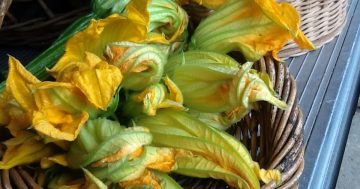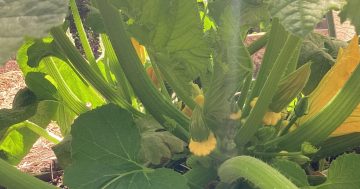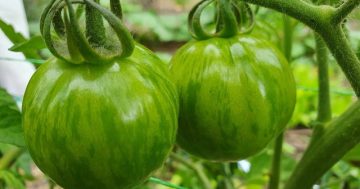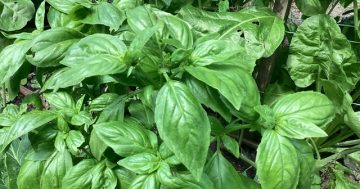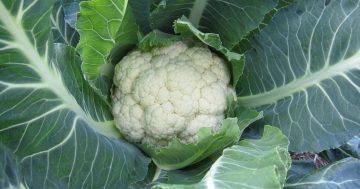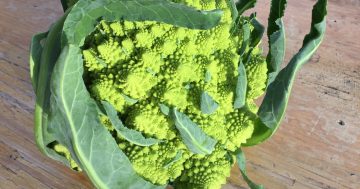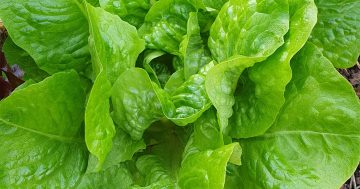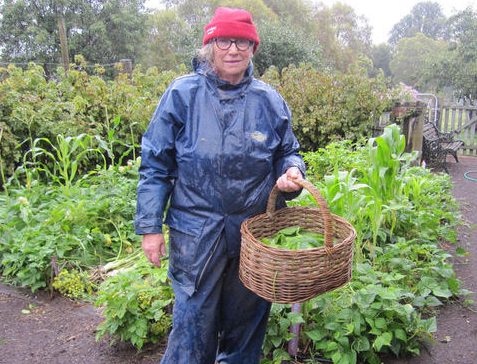
Bronwyn Richards in her wet-weather gardening clothes. Photo: Supplied.
Getting the best from your vegetable garden during a cooler, wetter and more humid early summer is going to stretch your ingenuity.
It is likely not going to be a great season for your heat-loving tomatoes, capsicum, eggplants and chillies. The wet, cool and humid weather will cause them to be very prone to fungal and bacterial diseases, with very slow fruit ripening.
The best tip is to try to keep them warm and a bit sheltered. As cold-climate gardeners, you are more than capable of winning against this current weird weather. It’s time to be creative with homemade cloche frames and plant covers.
This summer, it is also essential to deal promptly with damp-loving pests and diseases to keep your vegetable patch thriving.
Put out organic (or other) snail pellets regularly. Build this into your summer garden practice so every time you plant or weed, sprinkle pellets around. Don’t give those wet-loving snails and slugs a chance to build up their numbers in your garden.
Next, keep up the nutrients.
Heavy rain can leach nutrients from the soil and regular feeding will help. Given how wet everything is, feeding with a pelletised, complete fertiliser may be a better option than a liquid fertiliser at the moment.
To help discourage fungal and bacterial diseases, the next step is to keep plants up off the ground. Vertically growing suitable vegetables keeps the fruit and other vital parts of the plant away from contact with damp earth and can increase air circulation in your garden.

Support for vines will keep vegetables clear of wet soil. Photo: Supplied.
Cucumbers like growing upwards, and it can work with pumpkin as well, depending on the variety. Naturally, a smaller pumpkin will be more easily supported by its vine.
If you have cucumber and pumpkin plants that are already growing with established lengthy vines, just try draping some of those vines over a trellis of some sort and let the plants continue to grow in place.
Keeping plants away from wet soil and removing leaves close to the ground is really important. A trellis can be as simple as a bit of mesh panel fencing propped up at an angle with some bricks or lengths of timber; or a sheet of panel fencing cut and joined to make an A-frame.
This current cool summer is great for growing all types of peas – snow, snap and shelling – but it would be best to grow climbing varieties rather than bush types. Likewise with beans.
Sow in the driest and best drained parts of the garden as the seeds can be very prone to disease when constantly wet. Rather than direct seeding in the garden, it may be best to start seeds in trays undercover and then transplant out in the garden after they have produced their true leaves.
It is also important to recognise when not to do any work with your soil. Very wet soil is easily damaged, and soil structure can be wrecked if you go digging in it right after rain.
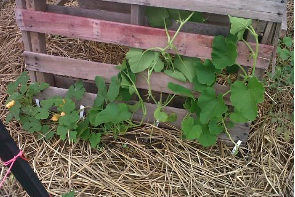
Innovative support for strawberry plants. Photo: Supplied.
Even walking on the garden bed will do damage by compressing or compacting soil particles, which stops air from getting through the soil surface and can easily lead to waterlogging.
This can make life tougher for your plants and for worms so don’t dig, don’t plant and don’t weed in very wet soils.
While the wet summer will be tough on summer vegetables, you can continue to plant wonderful brassica seedlings. Cabbage, kales, broccoli and cauliflower will all enjoy the cooler summer conditions, as well all the wonderful Asian greens.
Just keep up the snail and slug reconnaissance and deterrent tactics. Snails have a taste for those precious leafy greens and will reproduce quickly, leaving baby snails who will treat your young bok choy and choy joi plants like a nursery dining room.
Also, lettuces are very prone to soft rot in wet weather. Grow leaf type picking lettuces rather than heading types, and experiment with some of the European-type lettuces such as radicchio and other chicories.
Gardening hygiene is especially important in wet weather. Clean your tools so fungal and bacterial disease doesn’t spread from plant to plant, particularly in moist conditions.
Don’t forget to treat your harvested veggies very carefully. Many will get some skin splitting and be prone to post-harvest disease, which will reduce their storage life.
Take a lesson from COVID-19 and treat your harvest crop to a wipe-over with an agriculturally approved sanitiser, but only worry about this if you are storing rather than eating immediately.
Bronwyn Richards and Helen Lynch run Wynlen House Artisan Village Farm and Learning Centre, a small village organic market garden in Braidwood, NSW. Since 2006, they have grown and sold fresh vegetables, eggs, preserves and garlic, and teach others to do the same.












